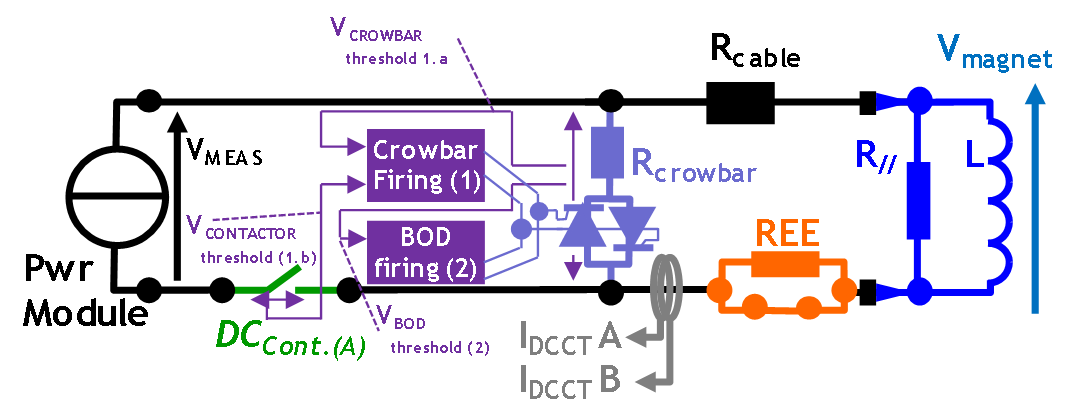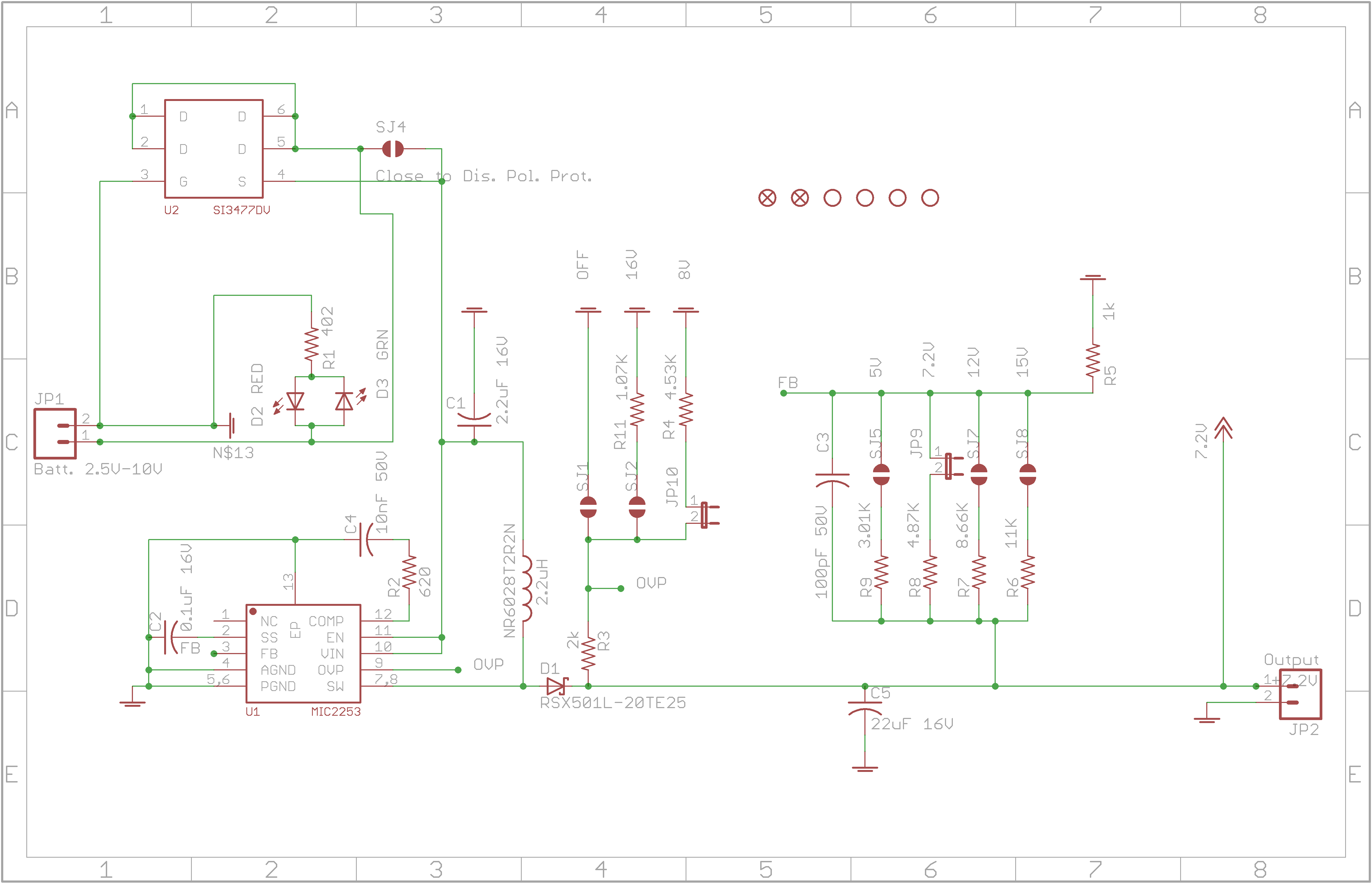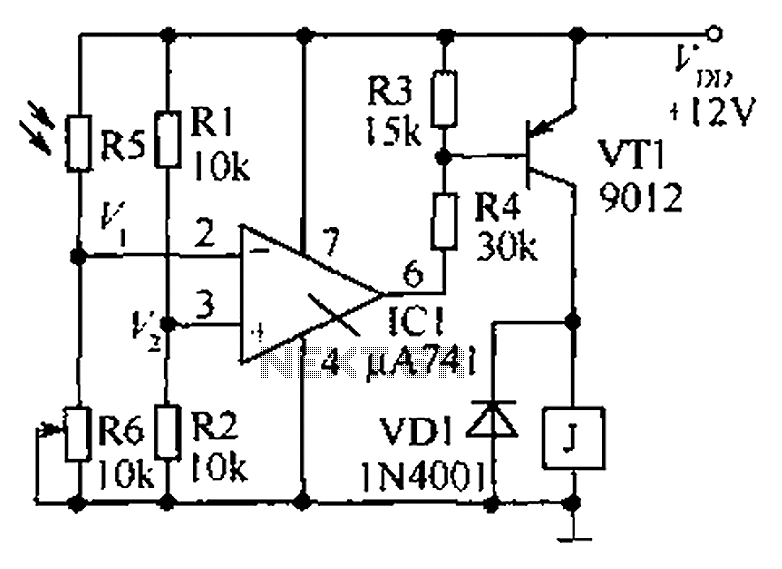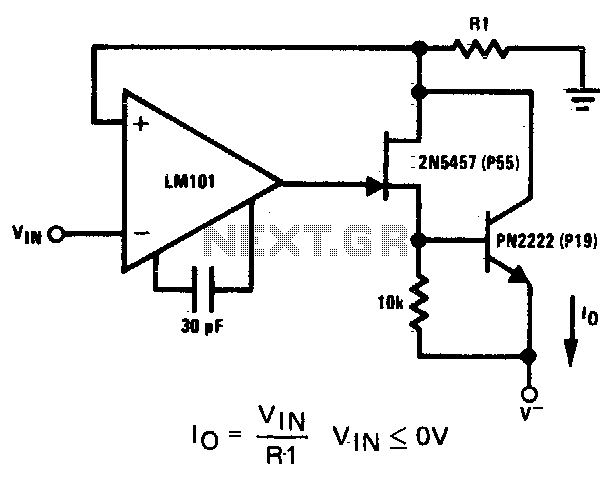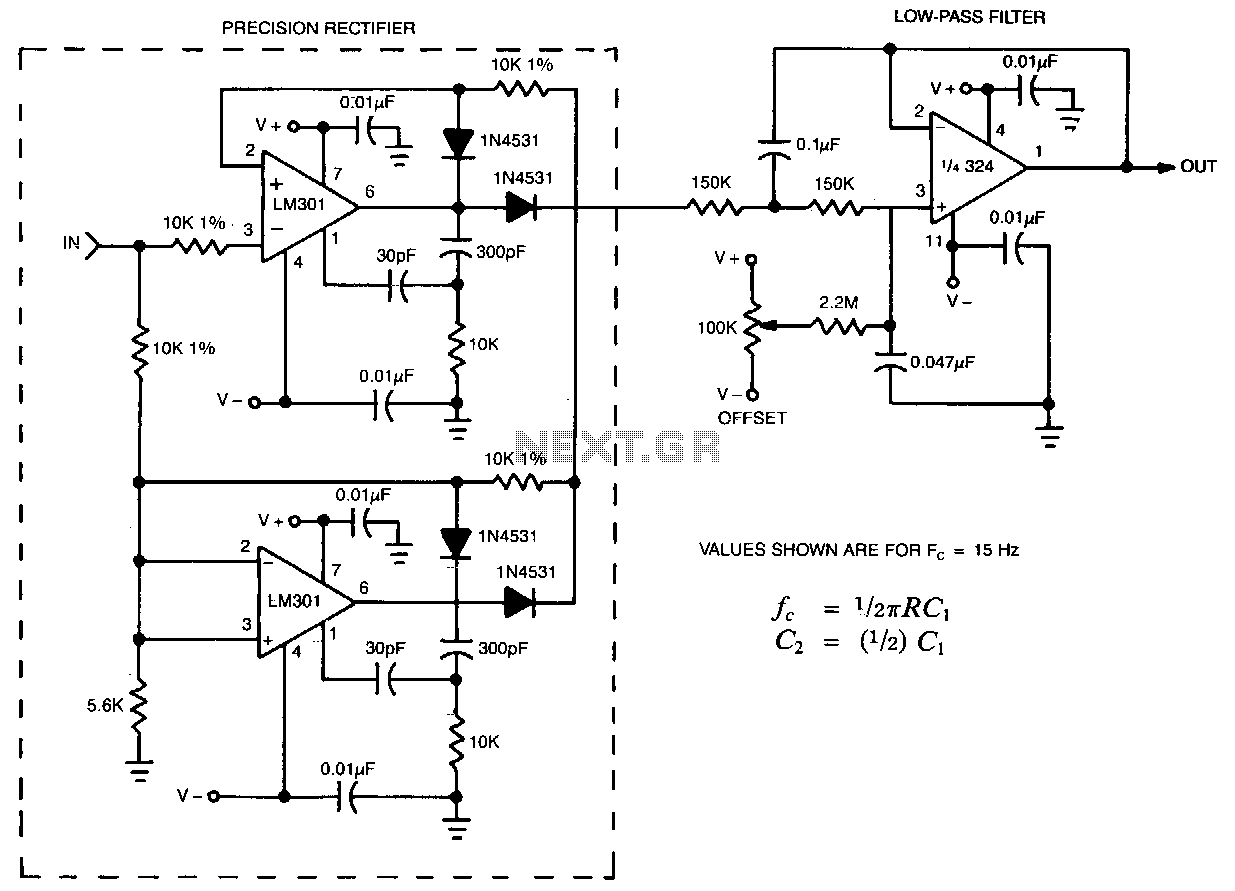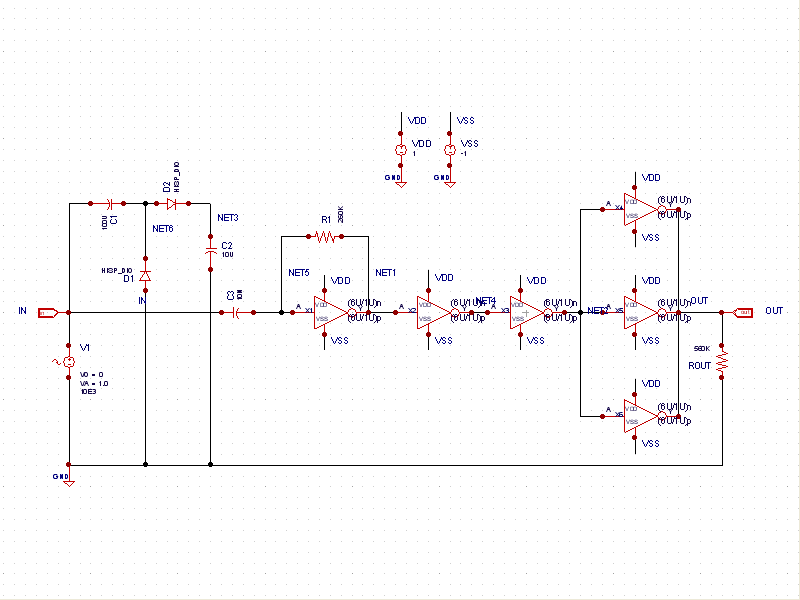
Precision peak-to-peak ac-dc converter
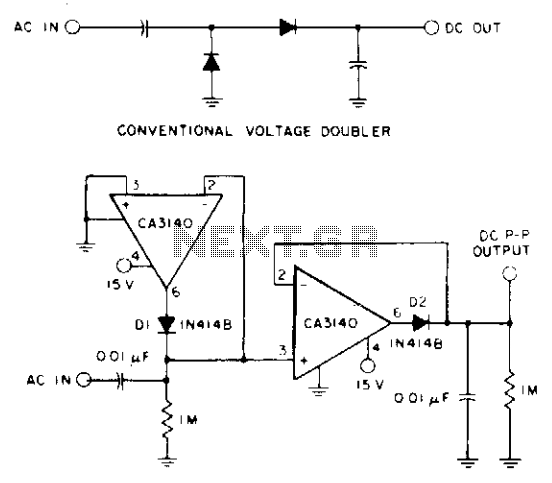
A CA3140 BiMOS operational amplifier, powered by a single positive supply, is employed to convert a traditional voltage doubler utilizing two precision diodes into a precise peak-to-peak AC-to-DC voltage converter. This configuration offers a wide dynamic range and extensive bandwidth.
The circuit design leverages the characteristics of the CA3140 BiMOS op-amp, which combines the advantages of both bipolar and CMOS technologies, providing high input impedance and low output impedance. The voltage doubler configuration consists of two precision diodes arranged to rectify the AC input signal. The diodes are selected for their low forward voltage drop, ensuring minimal loss of amplitude during the rectification process.
The operational amplifier is configured in a feedback loop that enhances the linearity and accuracy of the output voltage. The gain of the op-amp can be adjusted by varying the feedback resistors, allowing for precise control over the output level. This adaptability is particularly beneficial for applications requiring different output voltage levels from the same input signal.
Additionally, the circuit's wide dynamic range is achieved through the op-amp's ability to handle varying input signal amplitudes without significant distortion. The bandwidth of the circuit is determined by the op-amp's specifications, which typically allow for high-frequency operation, making it suitable for a variety of AC signal inputs.
In summary, the integration of the CA3140 BiMOS op-amp with a voltage doubler and precision diodes results in an efficient and versatile AC-to-DC voltage conversion solution, capable of delivering accurate and stable output across a broad spectrum of input conditions. This design is applicable in various electronic systems where reliable DC voltage is required from AC sources.Using a CA3140 BiMOS op amp and a single positive supply converts a conventional voltage doubler with two precision diodes into a precision peak-to-peak ac-to-dc voltage converter having wide dynamic range and wide bandwidth. This is the circuit.
The circuit design leverages the characteristics of the CA3140 BiMOS op-amp, which combines the advantages of both bipolar and CMOS technologies, providing high input impedance and low output impedance. The voltage doubler configuration consists of two precision diodes arranged to rectify the AC input signal. The diodes are selected for their low forward voltage drop, ensuring minimal loss of amplitude during the rectification process.
The operational amplifier is configured in a feedback loop that enhances the linearity and accuracy of the output voltage. The gain of the op-amp can be adjusted by varying the feedback resistors, allowing for precise control over the output level. This adaptability is particularly beneficial for applications requiring different output voltage levels from the same input signal.
Additionally, the circuit's wide dynamic range is achieved through the op-amp's ability to handle varying input signal amplitudes without significant distortion. The bandwidth of the circuit is determined by the op-amp's specifications, which typically allow for high-frequency operation, making it suitable for a variety of AC signal inputs.
In summary, the integration of the CA3140 BiMOS op-amp with a voltage doubler and precision diodes results in an efficient and versatile AC-to-DC voltage conversion solution, capable of delivering accurate and stable output across a broad spectrum of input conditions. This design is applicable in various electronic systems where reliable DC voltage is required from AC sources.Using a CA3140 BiMOS op amp and a single positive supply converts a conventional voltage doubler with two precision diodes into a precision peak-to-peak ac-to-dc voltage converter having wide dynamic range and wide bandwidth. This is the circuit.
